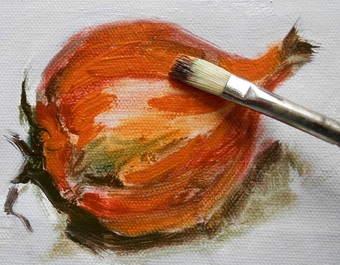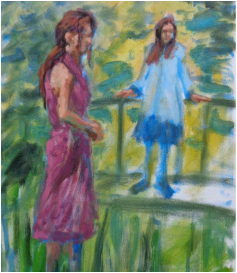In order to write and illustrate ‘Paint Like Renoir’, I was required to produce a series of paintings that would emulate the Master’s technique and allow me to deconstruct his methods in a step-by-step way. My first attempts, based on a few comments that I had read and some preconceptions about Renoir’s approach were woefully inadequate, lacking the luminous colour and the daredevil paint handling of the Frenchman.
I had to look much closer at the Master’s work and read between the lines of his and other’s reflections on his technique. Here are 10 things that I learned in the process that have changed the way that I approach oil painting.
I had to look much closer at the Master’s work and read between the lines of his and other’s reflections on his technique. Here are 10 things that I learned in the process that have changed the way that I approach oil painting.
- Begin your painting with thin diluted paint - it covers the canvas quickly and is easier to handle than quantities of thicker paint.
- Work on a white canvas surface - the colour in the dilute paint appears more luminous as the white background shines through. This is a helpful way in to painting with more intense colours.
- Paint shapes not lines - the image can evolve gradually and instinctively.
- Add linseed oil to your mixed colours - the paint wil flow more easily allowing you to 'draw' in paint.
- Extend your range of colours particularly towards the brighter cadmiums and chromes.
- Work alla prima for as long as possible - this can often be pushed further than you first think - especially if the paint mixtures are fluid enough.
- Deconstruct your subject and work in a particular order - for example with onion illustrated, the outer skins were painted last, because they sit on top of the other layers.
- Balance warm and cool colours - identify cool and warm darks and use them alternately
- Work with a variety of paint consistencies - in the composition of the 2 girls below, the background areas are painted thinly, while the figures have been built up with thicker paint
- Conclude with Final Emphasis - add the lightest and brightest, or darkest accents at the end.


 RSS Feed
RSS Feed